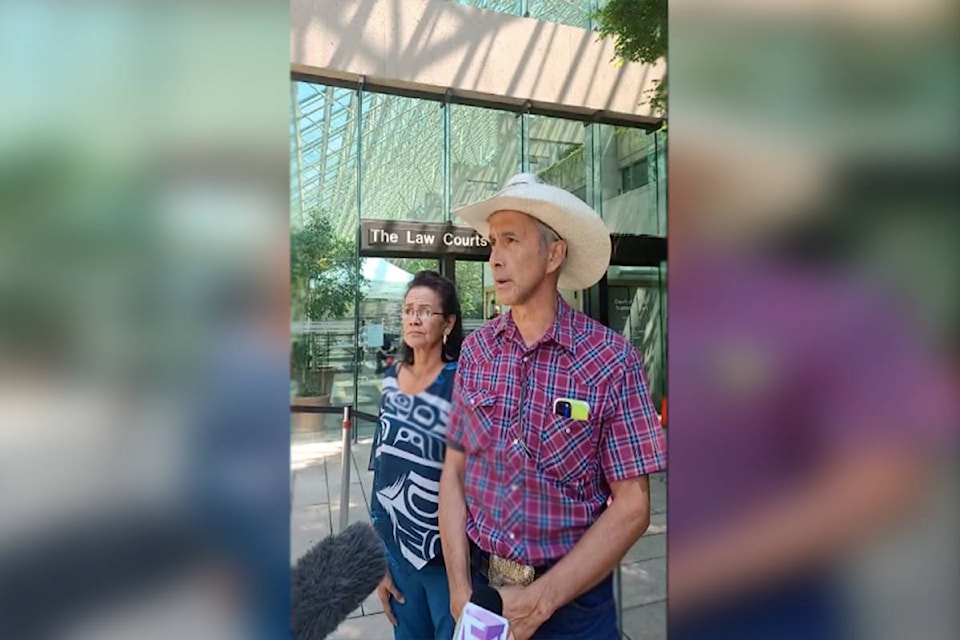Friday, July 9 marked the end of a 189-day trial against Rio Tinto Alcan by several First Nations near Vanderhoof, B.C., who say their rights and traditional ways of life have been devastated since the construction of the Kenney Dam.
Outside the steps of the BC Supreme Court House in Vancouver following the final court hearing were Saik’uz First Nation councillors Jackie Thomas and Rodney Teed.
“We’re here today for the water—the Nechako River in particular,” Thomas said, noting the day marked the end of a ten-year legal case launched by Saik’uz and Stellat’en.
“Ten years is only one decade of the 70 years that our people have been having issues with this diversion of the Nechako River.”
Saik’uz and Stellat’en First Nations launched legal action in BC Supreme Court in 2011.
Water from the Nechako River has been blocked since 1952 following the construction of the Kenney Dam to create the Nechako Reservoir, which is used to generate electricity to power Rio Tinto Alcan’s aluminum smelter in Kitimat.
In a joint media advisory, both nations said the Nechako watershed was devastated in the process, and salmon and sturgeon stocks were almost wiped out.
Teed said he remembered when he was a young boy and would set a few nets out on the Nechako River, catching up to 100 to 200 fish at a time.
As the years would go by, Teed would take up fishing at his grandmother’s fish camp and would mostly bring up weeds and be lucky to catch five or six fish at a time.
Teed said the reason he would go and fish is so he could provide for his family.
“It is their right to know how to survive in our territory, so we do this for our children, for our future,” he said, adding he would often bring along his grandchildren.
READ MORE: Saik’uz and Stellat’en First Nations court battle against RioTinto Alcan to start next week
“My people need to know where they come from; they need to know their history before they can go forward. That’s how I learned, and we need that to heal ourselves from the devastation of [residential] school, drugs and alcohol—we need the fish, we need the forest, we need everything that came with mother nature to give us to heal.”
Chief Priscilla Mueller could not be with Teed and Thomas as she felt it was critical to stay with her community as nearby wildfires continued to burn.
“I really would like to see our Nations have a say in the health of the river,” Mueller said, noting First Nations were not consulted of a 1987 tripartite agreement between Rio Tinto, British Columbia and Canada.
“I think if we were involved at the time, we wouldn’t be here today, so we really need to be able to have a say in how we’re going to manage the river.”
Mueller suspects a decision won’t be known until at least fall 2021 and said they remain focused on restoring the river’s health, which she believes could slowly but surely be brought back.
As First Nations now await for the BC Supreme Court to issue its decision on the nearly 200-day trial, Mueller added she is hopeful there will be a good outcome for not only Indigenous communities but non-Indigenous communities as well.
“The health of the river affects us all.”
READ MORE: RDBN calls on Canada, B.C. and Rio Tinto to restore the natural flow of the Nechako River
Do you have a comment about this story? email:
rebecca.dyok@wltribune.com
Like us on Facebook and follow us on Twitter.
